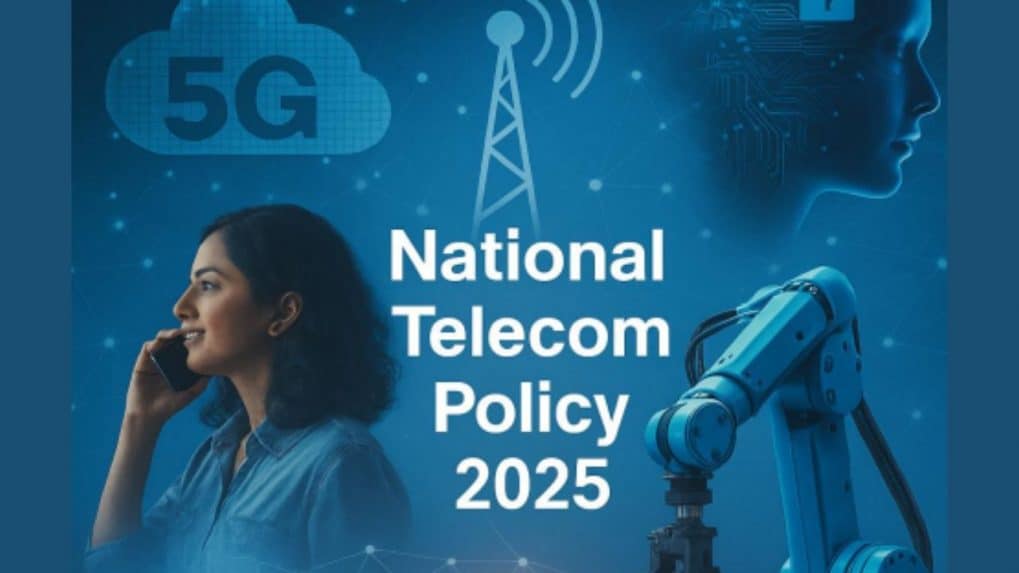Draft Telecom Policy aims to cover 100% population by 4G & 90% by 5G by 2030; to create 1 million new jobs
Open for public consultation, the latest National Telecom Policy, 2025 aims to boost self-reliance, mobilise Rs 1 lakh crore annually in telecom infrastructure investments, and double telecom product exports.
ADVERTISEMENT
The Department of Telecommunications (DoT) has circulated the draft National Telecom Policy (NTP), 2025, for public consultation, in which it has set goals of covering 100% of the population with 4G and 90% by 5G by 2030, and ensuring accessibility of devices for all.
The DoT has requested to provide the feedback or suggestions from the stakeholders and public within 21 days from the date of issue of the circular (i.e. July 23).
The policy aims to fixe broadband in 100 million homes, and the creation of 1 million new jobs in the sector. Another 1 million workers are targeted to be reskilled for the digital economy.
Apart from them, it has also proposed deploy one-million public Wi-Fi hotspots and complement resilience of National Long Distance (NLD) telecommunication via use of submarine cable.
Additionally, the government is aiming to mobilize Rs 1 lakh crore (~$12.1 billion) annually in telecom infrastructure investments, double telecom product exports, and expand fibre reach to 80% of mobile towers.
A new “Digital Bharat Nidhi” scheme is proposed to expand networks in remote and uncovered areas, along with incentives to fast-track fixed-line broadband.
"The NTP-25 represents a transformative vision for India’s digital future, reaffirming the country’s strategic commitment to telecommunications as a foundational pillar for economic development, social empowerment, and technological innovation," the preamble of the draft policy said.
Building on the progress made under the National Digital Communications Policy 2018, NTP-25 addresses the transformative potential and emerging challenges of next-generation technologies such as 5G, 6G, AI, IoT, quantum communications, satellite networks, and blockchain.
"As these innovations reshape global value chains, the policy positions India to harness them for bridging the digital divide, driving inclusive development, and cementing its role as a global digital leader," the preamble added.
To boost self-reliance, the policy targets a 150% increase in domestic telecom manufacturing and 50% import substitution.
Further, it proposes setting up a dedicated Telecom Manufacturing Zone (TMZ), 30 advanced research labs, and an Indian Institute of Telecom Technology (IIT2) for talent development. A complete supply chain ecosystem and stronger Telecom Sector Skill Council (TSSC) will support this effort.
The policy aims to place India among the top 10 innovation hubs for telecom technologies like 6G, AI, IoT, and quantum communications. It sets a target to capture 10% of global 6G-related IPRs, co-create digital twin applications, ease spectrum access for R&D, and transform C-DOT into a telecom R&D excellence center.
The policy proposes establishing 10 Centres of Excellence and backing 500 telecom-tech startups and MSMEs. An innovation-focused Section 8 company will also be created.
Overall, the DoT has outlined six strategic missions to achieve its objectives that include Universal and Meaningful Connectivity; Innovation; Domestic Manufacturing; Secure and trusted Telecom Network; Ease of Living and Ease of Doing Business; and Sustainable Telecom.
For secure and trusted telecom network, the policy suggests conducting telecom cybersecurity audits of telecom network to ensure resilience against emerging new age cyber threats; monitor effectively satellite communications to ensure cybersecurity, data integrity, and protection against unauthorised access or interference; and enable trusted hardware/software supply chains.
Read more: CDNs, IBS and Satellite services: What TRAI’s new telecom guidelines mean for businesses
It has also suggested for establishing the Satcom Monitoring Facility (SMF) to monitor Indian and foreign satellites and improve mitigation of satellite carrier interference, and to introduce Mobile number validation service for providing a secure telecom space to other services sector entities like banking, insurance, social media, e-governance, etc for prevention of misuse of telecom resources for cyber frauds.

